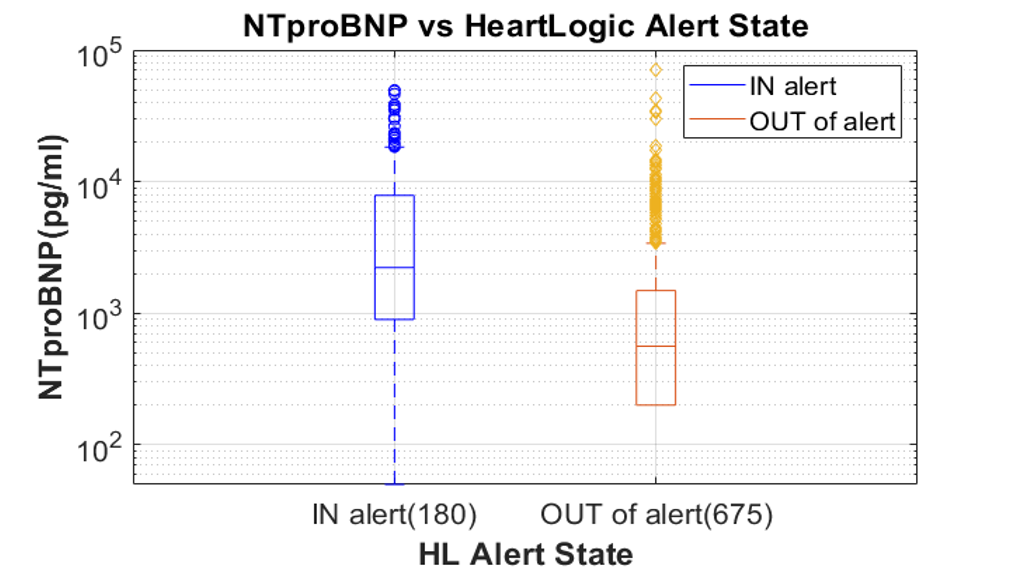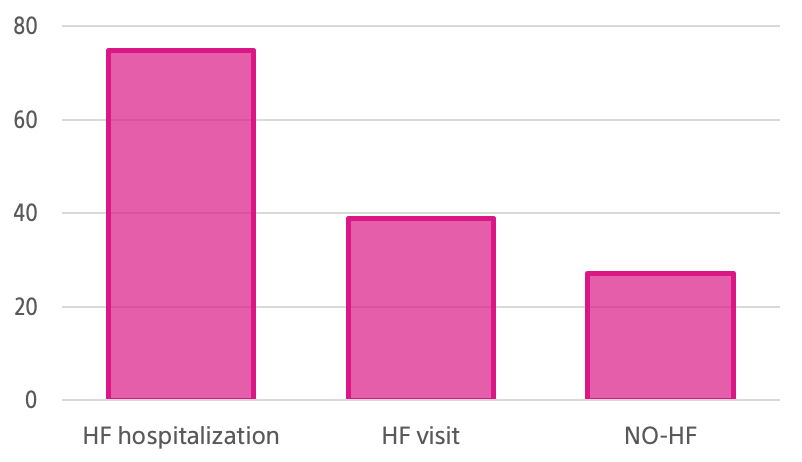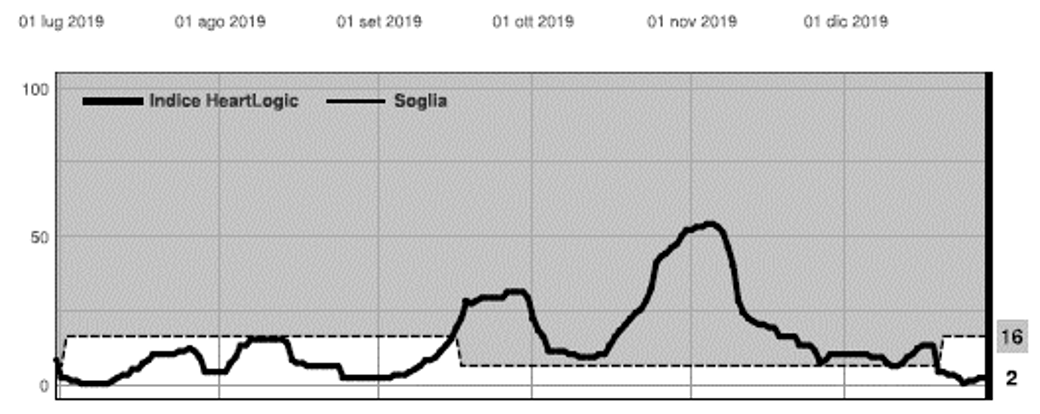Dear HeartLogic™ users,
With the rapid spread of COVID-19 and the consequent lockdowns imposed in many countries, congresses have been either cancelled or transformed into virtual sessions.
This is also the case for the ESC-HFA congress scheduled in Barcelona on May 23-26, that was cancelled. Meanwhile, the ESC leadership and the Heart Failure Association (HFA) created the HFA Discoveries platform to share live presentations on Late-Breaking Trials and accepted abstracts.

Hereunder we share with you the latest HeartLogic clinical evidence, accepted at the ESC-HFA Congress: an analysis from the MultiSENSE study, two abstracts from the Spanish Registry and an analysis from the Italian pilot experience.
Comparison of NT-proBNP concentrations when IN or OUT of HeartLogic alerts
(Gardner et al.)
N-terminal pro-B-type natriuretic peptide (NT-proBNP) has proven to be a valuable biomarker in the diagnosis and prognosis of heart failure (HF), and NT-proBNP concentrations rise with worsening HF.
The objective of this analysis is to compare NT-proBNP concentrations during periods IN or OUT of an active HeartLogic alert.
In MultiSENSE study (900 patients) the clinicians were blinded to the HeartLogic index and optional NT-proBNP tests were conducted when clinically needed (e.g., patients were hospitalized with HF signs and symptoms).
In this analysis the HeartLogic index of the day before each of the NT-proBNP test dates was extracted and based on the HeartLogic alert state (i.e., IN alert vs OUT of alert), NT-proBNP concentrations were divided into two groups and compared.
RE-HEART – Spanish Registry
(De Juan et al.)
The Spanish Multicentric HeartLogicTM Registry (RE-HEART) collects data from 17 Spanish centers about the HeartLogic alerts and heart failure events.
The study was divided in three phases:
- Blinded phase: review of events prior to the possibility of access and visualization of HeartLogic index and correlation with index value.
- Prospective phase in clinical practice: access to HeartLogic index and alert management following their own clinical practice
- Prospective phase with standardized protocol to react to alerts (from September 2019 to September 2020).
Abstracts submitted referred to phase 1 and 2.
Phase 1: Preliminary results of the Spanish multicentric HeartLogic (RE-HEART) Registry: a blinded analysis
The objective of this analysis was to evaluate the association between clinical events and HeartLogic alerts in patients with ICD and cardiac resynchronization therapy ICD remotely monitored at Spanish centers.
HeartLogic index and ICD-based sensor data collected from device implantation to HeartLogic activation were retrieved to perform a blinded analysis of the association between clinical events and alerts.
104 patients were enrolled in blinded phase with a median follow-up of 8 [3–12] months and the HeartLogic index crossed the default threshold value 34 times in 20 patients. HeartLogic alerts were associated with:
- 6 HF hospitalizations
- 5 unplanned in-office visits for HF
- 5 additional HeartLogic threshold crossings occurred at the time of changes in drug therapy or of other clinical events
- 18 alerts remained unexplained ( 0.25 alert-patient/year)
The median time spent in alert was longer in the case of HF hospitalizations than of in-office (Figure 2).
The maximum HeartLogic index value was 38±15 in the case of hospitalizations and 24±7 in that of minor HF events
This analysis shows the association between HeartLogic alerts and HF-related clinical events.
Minor events resulted in shorter duration of the alert state and lower index value.
Phase 2: Preliminary results of the Spanish multicentric HeartLogic (RE-HEART) Registry - adoption of an alert-based HF management approach
The objective of this second analysis coming from RE-HEART registry was to evaluate the adoption of HeartLogic alert in the clinical practice of Spanish centers: clinical events occurring after HeartLogic activation and clinical actions taken in response to alerts.
After HeartLogic activation, during a median follow-up of 5 [2-10] months 40 alerts were reported in 26 patients.
Twenty-seven (68%) alerts were associated with multiple HF- or non-HF related conditions or changes in prescribed HF therapy. Multiple actions triggered by these alerts were reported in Figure 3:
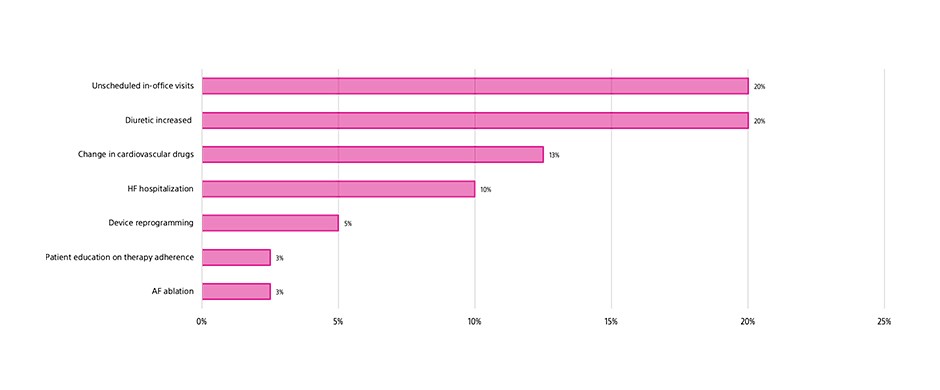
HeartLogic contributing sensors at the time of alerts are reported in Figure 4
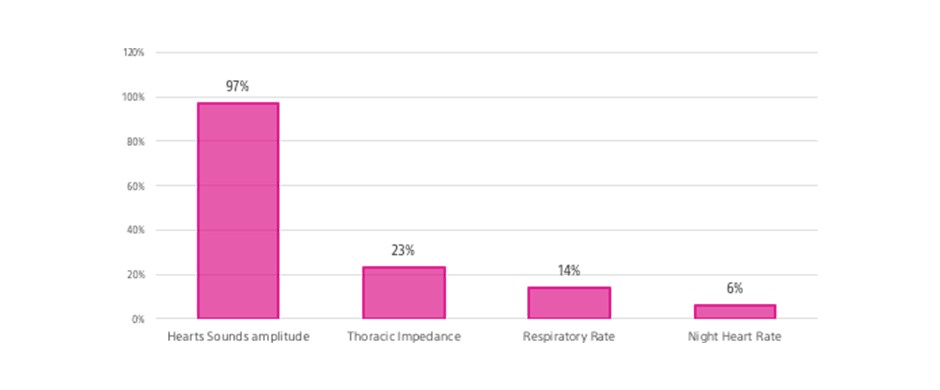
Relevant clinical conditions were remotely detected using HeartLogic alert. The adoption of the alerting system allowed to remotely implement clinical actions.
Among the sensed parameters that contribute to the calculation of the index, accelerometer-based heart sounds seemed to be the most sensitive.
Prospective evaluation of the Multisensor ICD Algorithm for Heart Failure Monitoring
(Dr. Santobuono et al.)1
This analysis comes from the Italian Pilot registry and the aim is to describe the experience of remote HF management by means of HeartLogic and appraise the value of an alert-based follow-up strategy.
HeartLogic was activated in 104 patients. All patients were followed up according to a standardized protocol that included remote data reviews and patient phone contacts every month and at the time of HeartLogic alerts. In-office examinations were performed every 6 months or when deemed necessary.
During a median follow-up of 13 [10-16] months, the overall number of HF hospitalizations was 16 (rate 0.15 hospitalizations/patient-year) and 100 HeartLogic alerts were reported in 53 patients.
60 HeartLogic alerts were judged clinically meaningful (i.e. associated with worsening of HF or resulted in active clinical actions).
For 48 out of 60 ( 80%) alerts the clinician was not previously aware of the condition.
Of these, 43 alerts triggered multiple clinical actions as reported in figure 5.
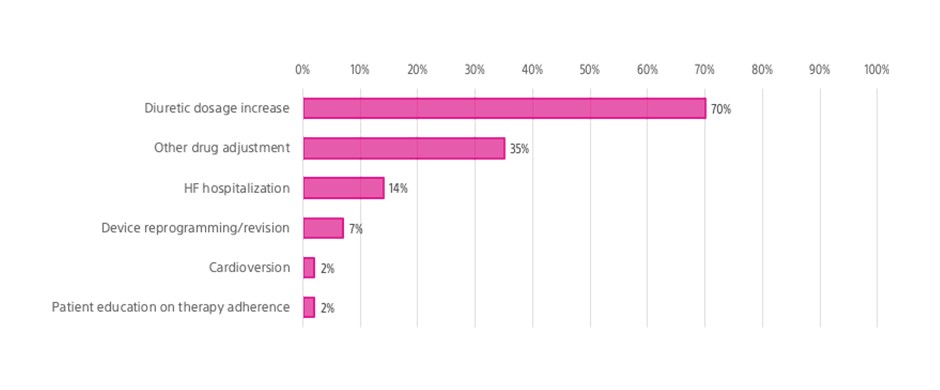
Signs and symptoms of heart failure were most frequently detected when patient was in alert condition, than at the time of scheduled remote or in-office visits, when the patient was out of HeartLogic alert state.
HeartLogic allowed relevant HF-related clinical conditions to be identified remotely and enabled effective clinical actions to be taken; the rates of unexplained alerts and undetected HF events were low. An alert-based management strategy seemed more efficient than a scheduled monthly remote follow-up scheme.
Case of the month
A 75-year-old man underwent a CRT-D device implantation for secondary prevention of sudden death on September 11th, 2018. The HeartLogic™ index was activated at the time of implantation.
On September 16th , 2019 an HeartLogic alert was notified to the center...
















